Policy Research on Biodiversity Governance  In the last few decades, international biodiversity diplomacy (bio-diplomacy) has undergone deep changes in both its nature and scope. These changes have been characterized by an intensification and diversification of relevant constituents and actors, the increased complexity of relevant subject matter, and a broadening of the diplomatic agenda to include areas with a strong connection to science and technology policy, business, standard setting, and rule making.
In the last few decades, international biodiversity diplomacy (bio-diplomacy) has undergone deep changes in both its nature and scope. These changes have been characterized by an intensification and diversification of relevant constituents and actors, the increased complexity of relevant subject matter, and a broadening of the diplomatic agenda to include areas with a strong connection to science and technology policy, business, standard setting, and rule making.
Global challenges facing the international community today include the creation of safe and equitable mechanisms and institutions capable of providing effective guidance for the development and use of biotechnology, the links between climate change and biodiversity, traditional knowlege and adaptation to climate change and indigenous peoples.
A greater level of awareness among relevant actors is needed within this complicated environment regarding the scientific, governance, and ethical issues that now take up so much space across diplomatic agendas.
Environment and Ecology
environment - ecology - nature - habitat - gaia - permaculture - systems - sustainability ...
Biodiplomacy InitiativeGenetically Modified Foods and Organisms
|
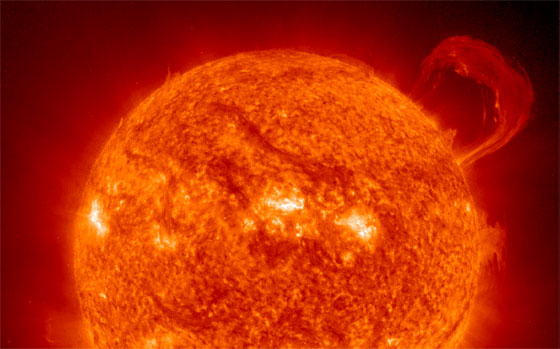 |
Extreme Ultraviolet Imaging Telescope (EIT) image of the sun with a huge, handle-shaped prominence, taken in 1999. While there is no evidence of a change trend in solar output over the past half century, long-term changes in solar output are not well-understood. |
This website presents a data-rich view of climate and a discussion of how that data fits together into the scientists' current picture of our changing climate. But there's a great deal that we don't know about the future of Earth's climate and how climate change will affect humans.
For convenience and clarity, climate scientists separate things that affect climate change into two categories: forcings and feedbacks.
Also, climate scientists often discuss "abrupt climate change," which includes the possibility of "tipping points" in the Earth's climate. Climate appears to have several states in which it is relatively stable over long periods of time. But when climate moves between those states, it can do so quickly (geologically speaking), in hundreds of years and even, in a handful of cases, in only a few decades. These rapid 'state changes' are what scientists mean by abrupt climate change. They are much more common at regional scales than at the global scale, but can be global. State changes have triggers, or "tipping points," that are related to feedback processes. In what's probably the single largest uncertainty in climate science, scientists don't have much confidence that they know what those triggers are.
Below is an explanation of just a few other important uncertainties about climate change, organized according to the categories forcing and feedback. This list isn't exhaustive. It is intended to illustrate the kinds of questions that scientists still ask about climate.
The greenhouse effect
 Most scientists agree the main cause of the current global warming trend is human expansion of the "greenhouse effect" -- warming that results when the atmosphere traps heat radiating from Earth toward space.
Most scientists agree the main cause of the current global warming trend is human expansion of the "greenhouse effect" -- warming that results when the atmosphere traps heat radiating from Earth toward space.
Certain gases in the atmosphere behave like the glass on a greenhouse, allowing sunlight to enter, but blocking heat from escaping. Long-lived gases, remaining semi-permanently in the atmosphere, which do not respond physically or chemically to changes in temperature are described as "forcing" climate change whereas gases, such as water, which respond physically or chemically to changes in temperature are seen as "feedbacks."
Gases that contribute to the greenhouse effect include:
- Water vapor. The most abundant greenhouse gas, but importantly, it acts as a feedback to the climate. Water vapor increases as the Earth's atmosphere warms, but so does the possibility of clouds and precipitation, making these some of the most important feedback mechanisms to the greenhouse effect.
- Carbon dioxide (CO2). A minor but very important component of the atmosphere, carbon dioxide is released through natural processes such as respiration and volcano eruptions and through human activities such as deforestation, land use changes, and burning fossil fuels. Humans have increased atmospheric CO2 concentration by a third since the Industrial Revolution began. This is the most important long-lived "forcing" of climate change.
- Methane. A hydrocarbon gas produced both through natural sources and human activities, including the decomposition of wastes in landfills, agriculture, and especially rice cultivation, as well as ruminant digestion and manure management associated with domestic livestock. On a molecule-for-molecule basis, methane is a far more active greenhouse gas than carbon dioxide, but also one which is much less abundant in the atmosphere.
- Nitrous oxide. A powerful greenhouse gas produced by soil cultivation practices, especially the use of commercial and organic fertilizers, fossil fuel combustion, nitric acid production, and biomass burning.
- Chlorofluorocarbons (CFCs). Synthetic compounds of entirely of industrial origin used in a number of applications, but now largely regulated in production and release to the atmosphere by international agreement for their ability to contribute to destruction of the ozone layer. They are also greenhouse gases .
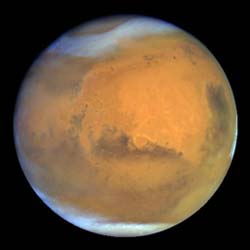 Not enough greenhouse effect: The planet Mars has a very thin atmosphere, nearly all carbon dioxide. Because of the low atmospheric pressure, and with little to no methane or water vapor to reinforce the weak greenhouse effect, Mars has a largely frozen surface that shows no evidence of life.
|
|
 Too much greenhouse effect: The atmosphere of Venus, like Mars, is nearly all carbon dioxide. But Venus has about 300 times as much carbon dioxide in its atmosphere as Earth and Mars do, producing a runaway greenhouse effect and a surface temperature hot enough to melt lead.
|
On Earth, human activities are changing the natural greenhouse. Over the last century the burning of fossil fuels like coal and oil has increased the concentration of atmospheric carbon dioxide (CO2). This happens because the coal or oil burning process combines carbon with oxygen in the air to make CO2. To a lesser extent, the clearing of land for agriculture, industry, and other human activities have increased concentrations of greenhouse gases.
The consequences of changing the natural atmospheric greenhouse are difficult to predict, but certain effects seem likely:
- On average, Earth will become warmer. Some regions may welcome warmer temperatures, but others may not.
- Warmer conditions will probably lead to more evaporation and precipitation overall, but individual regions will vary, some becoming wetter and others dryer.
- A stronger greenhouse effect will warm the oceans and partially melt glaciers and other ice, increasing sea level. Ocean water also will expand if it warms, contributing further to sea level rise.
- Meanwhile, some crops and other plants may respond favorably to increased atmospheric CO2, growing more vigorously and using water more efficiently. At the same time, higher temperatures and shifting climate patterns may change the areas where crops grow best and affect the makeup of natural plant communities.
The role of human activity
In its recently released Fourth Assessment Report, the Intergovernmental Panel on Climate Change, a group of 1,300 independent scientific experts from countries all over the world under the auspices of the United Nations, concluded there's a more than 90 percent probability that human activities over the past 250 years have warmed our planet.
The industrial activities that our modern civilization depends upon have raised atmospheric carbon dioxide levels from 280 parts per million to 379 parts per million in the last 150 years. The panel also concluded there's a better than 90 percent probability that human-produced greenhouse gases such as carbon dioxide, methane and nitrous oxide have caused much of the observed increase in Earth's temperatures over the past 50 years.
They said the rate of increase in global warming due to these gases is very likely to be unprecedented within the past 10,000 years or more. The panel's full Summary for Policymakers report is online at http://www.ipcc.ch/pdf/assessment-report/ar4/syr/ar4_syr_spm.pdf.
Growing Organic Agriculture from Eastern Europe to Central Asia
UNEP Green Economy Initiative Assesses Role of Sustainable Agriculture in Boosting Exports, Livelihoods and Jobs Across the Region - The potential to create a booming organic agriculture sector across Eastern Europe, the Caucasus and Central Asia is the focus of a study announced today by the UN Environment Programme (UNEP).
Geneva, 12 April 2010
 UNEP is partnering with the International Federation of Organic Agriculture Movements (IFOAM) to examine the economic, employment, poverty reduction and environmental benefits that could be achieved through greater investment in sustainable agriculture in the Eastern Europe, Caucasus and Central Asia (EECCA) region.
UNEP is partnering with the International Federation of Organic Agriculture Movements (IFOAM) to examine the economic, employment, poverty reduction and environmental benefits that could be achieved through greater investment in sustainable agriculture in the Eastern Europe, Caucasus and Central Asia (EECCA) region.
This latest Green Economy Initiative project, being conducted at the request of environment ministers of the UN Economic Commission for Europe region, will include a sub-regional analysis and national studies in Ukraine, Armenia and Moldova.
National workshops will be organised in the three countries to consult a broad range of stakeholders, and the first forum in Armenia will be held tomorrow (13 April).
The study, funded by the Government of Sweden, will build on the findings of a 2007 report on sustainable consumption by UNEP and the European Environment Agency which concluded that the EECCA region's low use of synthetic fertilisers and pesticides, and its availability of workers presented good prospects for the growth and export of organic food products to Western Europe.
 According to the IFOAM, organic agriculture worldwide is developing rapidly with 35 million hectares of agricultural land managed organically by almost 1.4 million producers in over 150 countries, and the European Union is one of the world's largest and fastest growing markets for organics.
According to the IFOAM, organic agriculture worldwide is developing rapidly with 35 million hectares of agricultural land managed organically by almost 1.4 million producers in over 150 countries, and the European Union is one of the world's largest and fastest growing markets for organics.
Yet the share of organic farmland in Ukraine and Moldova is less than 1%, while sustainable farming is just beginning in Armenia.
Achim Steiner, UN Under-Secretary-General and UNEP Executive Director, said: "Organic agriculture can trigger sharply polarized views, sometimes presented as the anti-dote to modern, intensive agriculture systems or cast as a niche, luxury market for the few and the rich.
"But there is increasing evidence from Africa and elsewhere that organic agriculture can play its part in feeding the world and in meeting various sustainability goals, from water and improved soil quality to delivering higher levels of employment and conservation of biodiversity," he said.
"Several countries in Eastern Europe, the Caucasus and Central Asia are already producing organic produce and are part of one of the world's growth industries. This new initiative aims to assist in catalyzing more countries to take part and to increase the hectares of organic production in a region keenly looking for sustainable, Green Economy choices," added Mr Steiner.
Climate change negotiators agree on intensified UNFCCC negotiating schedule for 2010
 Bonn, 11 April 2010 - The first round of UN climate change talks since the UN Climate Change Conference in Copenhagen at the end of 2009 concluded Sunday in Bonn with agreement to intensify the negotiating schedule in order to achieve a strong outcome in Mexico at the end of the year.
Bonn, 11 April 2010 - The first round of UN climate change talks since the UN Climate Change Conference in Copenhagen at the end of 2009 concluded Sunday in Bonn with agreement to intensify the negotiating schedule in order to achieve a strong outcome in Mexico at the end of the year.
In addition to the negotiating sessions already scheduled for 2010, governments decided at the Bonn April meeting to hold two additional sessions of at least one week each.
The additional sessions will take place between the 32nd session of the UNFCCC Convention subsidiary bodies from 31 May to 11 June 2010 and the UN Climate Change Conference in Mexico from 29 November to 10 December 2010.
The Ad Hoc Working Group on Long-term Cooperative Action under the Convention (AWG-LCA) invited its Chair to prepare, under her own responsibility, a text to facilitate negotiations among Parties, in time for the May/June sessions in Bonn.
"At this meeting in Bonn, I have generally seen a strong desire to make progress," said UNFCCC Executive Secretary Yvo de Boer. "However, whilst more meeting time is important, it is itself not a recipe for success," he cautioned.
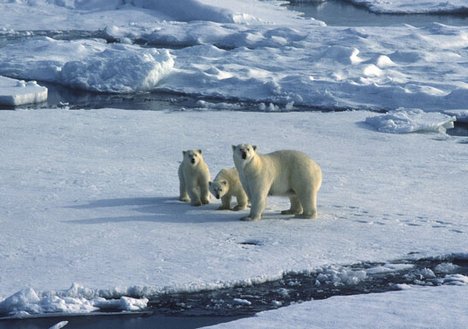 The UN's top climate change official called on governments to overcome differences, and work for greater clarity on what can be decided in the course of 2010 in the UN Climate Change negotiations.
The UN's top climate change official called on governments to overcome differences, and work for greater clarity on what can be decided in the course of 2010 in the UN Climate Change negotiations.
"We need to decide what can be agreed at the end of this year in Cancún and what can be put off until later," he said.
According to Mr. de Boer, negotiators must tackle three categories of issues in the course of this year: issues which were close to completion in Copenhagen and can be finalized at the UN Climate Change Conference in Cancún at the end of the year; issues where there are still considerable differences, but on which the Copenhagen Accord can provide important political guidance; and issues where governments are still far from agreement.
"The UN Climate Change Conference in Cancún must do what Copenhagen did not achieve: It must finalize a functioning architecture for implementation that launches global climate action, across the board, especially in developing nations," said Yvo de Boer.
Gaia: some implications for theoretical ecology
This paper was presented at the Wadebridge Ecological Centre's Conference: "Gaia: Theory, practice and implications", which took place at Camelford, Cornwall in October 1987. It was published in The Ecologist Vol. 18 No. 2/3, 1988.
Ecology, as an academic discipline, was developed towards the end of the last century. It came into being largely when a few biologists came to realise that the biological organisms and populations which they studied were not arranged at random but were, on the contrary, organised to form 'communities' or 'associations' whose structure and function could not be understood by examining their parts in isolation from each other. Both Frederick Clements and Victor Shelford, two of the most distinguished of the early ecologists in the USA, defined ecology as the "science of communities". [1]
Is the scientific evidence of human-induced climate change unequivocal? But, as we now know, the negotiations only produced an aspirational target—to limit the global mean surface temperature to no more than 2 degrees C above pre-industrial levels—and an accord that does not bind any country to reduce their emissions. Since then, the IPCC’s Fourth Assessment report has been criticized for errors or imprecise wording.
These inaccuracies, coupled with the controversy surrounding illegally hacked e-mails and temperature data from the University of East Anglia (UEA), have provided climate skeptics and some media with ammunition to undermine public confidence in the conclusions of the IPCC and climate science in general. Lots of Life in One Place - Permaculture Demonstration Farm of Arina and Scott Pittman
After years of building soil, “growing” shade and biomass, increasing biodiversity, incorporating animals (and people), working with sun, wind, water, cold drainage and Mother Nature - we are now celebrating the gifts of good land! Fruit trees’ bloom, native and honey bees, medley of medicinal herbs, milk goats, heirloom chickens and turkeys, a gang of loud guinea fowl, a restored wetlands teeming with fish, dragonflies, bugs and native waterfowl; rich gardens, pastures and orchards surround our natural home with its cutting edge energy and water management design. It is truly beautiful and rewarding to be alive in a permaculture oasis!
With the abundance comes food processing, sharing of surplus, recycling of nutrients, teaching and learning new aspects of permaculture life style. Sample partial plant lists for guild planting in desert Southwest:
|
- WORLD WATER DAY
- Interconnections, Relationships, and Environmental Wholes: A Phenomenological Ecology of Natural and Built Worlds
- GIS and Space Syntax: An Analysis of Accessibility to Urban Green Areas in Doha District of Dammam Metropolitan Area
- Village Tours - Architectural Guided Tours of Southern Europe
- The Ecovillage at Findhorn
- Action to support Asia’s environment
- Ecosystem Approach to Management (EAM)






 Although "biotechnology" and "genetic modification" commonly are used interchangeably, GM is a special set of technologies that alter the genetic makeup of organisms such as animals, plants, or bacteria. Biotechnology, a more general term, refers to using organisms or their components, such as enzymes, to make products that include wine, cheese, beer, and yogurt.
Although "biotechnology" and "genetic modification" commonly are used interchangeably, GM is a special set of technologies that alter the genetic makeup of organisms such as animals, plants, or bacteria. Biotechnology, a more general term, refers to using organisms or their components, such as enzymes, to make products that include wine, cheese, beer, and yogurt.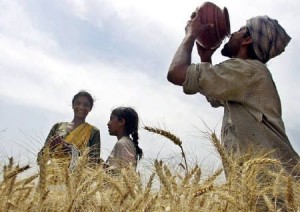 Food security is not only an explicit concern under climate change; successful adaptation and mitigation responses in the agricultural sector can only be achieved within the environmental and economic sustainability goals set forth in both the UNFCCC and the Millennium Development Goals. Use the links on the left to read more on emissions of greenhouse gases; the potential impacts of climate change; and solutions including mitigation, adaptation and the policy framework.
Food security is not only an explicit concern under climate change; successful adaptation and mitigation responses in the agricultural sector can only be achieved within the environmental and economic sustainability goals set forth in both the UNFCCC and the Millennium Development Goals. Use the links on the left to read more on emissions of greenhouse gases; the potential impacts of climate change; and solutions including mitigation, adaptation and the policy framework.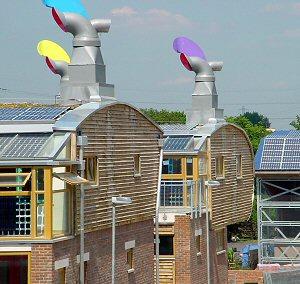 Code for Sustainable Homes
Code for Sustainable Homes
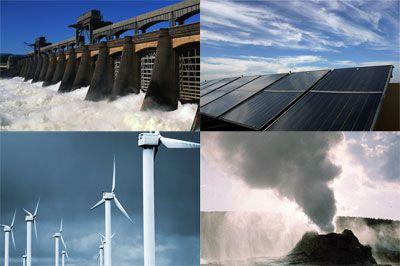 The Kyoto Protocol is an international agreement linked to the United Nations Framework Convention on Climate Change. The major feature of the Kyoto Protocol is that it sets binding targets for 37 industrialized countries and the European community for reducing greenhouse gas (GHG) emissions .These amount to an average of five per cent against 1990 levels over the five-year period 2008-2012.
The Kyoto Protocol is an international agreement linked to the United Nations Framework Convention on Climate Change. The major feature of the Kyoto Protocol is that it sets binding targets for 37 industrialized countries and the European community for reducing greenhouse gas (GHG) emissions .These amount to an average of five per cent against 1990 levels over the five-year period 2008-2012. Last December, a very large majority of the scientific community and most politicians would have agreed that the scientific evidence of human-induced climate change was unequivocal and that the only question was whether the world’s political leaders could agree in Copenhagen to meaningful legally binding greenhouse gas emission reduction targets.
Last December, a very large majority of the scientific community and most politicians would have agreed that the scientific evidence of human-induced climate change was unequivocal and that the only question was whether the world’s political leaders could agree in Copenhagen to meaningful legally binding greenhouse gas emission reduction targets.  With all travel and work away from home, it looked nearly impossible to attempt “walking the talk” at our farm. That was nine years ago, though, and we since have succeeded in turning our land and and home into a drylands permaculture and sustainable living showcase. Our practices and climate reflect the need for a more perennial polyculture system which is in the best tradition of permaculture. We also have to take into consideration the aesthetics and desires of our fellow community members, with whom we share the joys and the ownership of our ten acre oasis.
With all travel and work away from home, it looked nearly impossible to attempt “walking the talk” at our farm. That was nine years ago, though, and we since have succeeded in turning our land and and home into a drylands permaculture and sustainable living showcase. Our practices and climate reflect the need for a more perennial polyculture system which is in the best tradition of permaculture. We also have to take into consideration the aesthetics and desires of our fellow community members, with whom we share the joys and the ownership of our ten acre oasis. 



